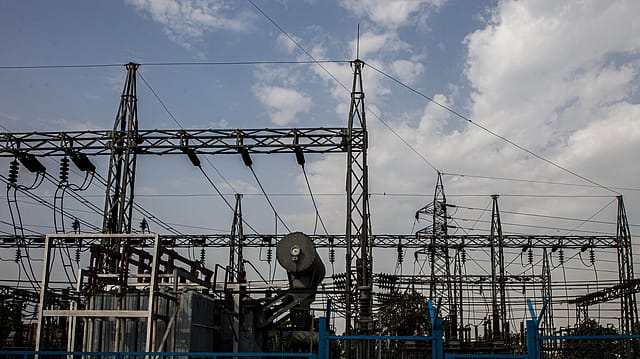Economy in full flow! Decade-best growth in energy demand in FY23
ADVERTISEMENT

India's energy demand in financial year 2022-23 increased by 9.5% compared to the previous financial year as per data released by Central Electricity Authority (CEA)—a record high in the past decade.
An analysis of data from 2010-11 onwards show, it was in 2011-12 that the power requirement increased by 8.77%. Since then, in 2021-22 the power requirement grew was 8.17%. During Covid year 2020-21, the energy demand fell 1.19%.
In 2022-23, the energy requirement was 15,11,214 million units against 13,79,812 million units in 2021-22. Though more than 15.11 lakh million units were required, there was a shortage of 7565 million units as 15,03,650 million units were supplied.
Among states, Gujarat and Uttar Pradesh witnessed 11% growth in energy requirement against the country’s growth of 8%, while states like Maharashtra saw 8% growth and Tamil Nadu saw a 4% increase.
In 2020-21, which was a Covid year, the energy requirement was 12,75,534 million units as the entire country was under lockdown for several months.
While the requirement for the current year is expected to be around 6% more than the previous year, states must be prepared to supply more power.
January 2026
Netflix, which has been in India for a decade, has successfully struck a balance between high-class premium content and pricing that attracts a range of customers. Find out how the U.S. streaming giant evolved in India, plus an exclusive interview with CEO Ted Sarandos. Also read about the Best Investments for 2026, and how rising growth and easing inflation will come in handy for finance minister Nirmala Sitharaman as she prepares Budget 2026.
"Overall, the energy requirement was high in the last financial year as it was the first year where there was no Covid lockdown and sections of the economy worked more or less at full capacity," says a senior CEA official.
In the first half of 2022, a heatwave and easing of Covid-19 curbs drove power demand higher. Erratic weather and a jump in agricultural activity were among the most prominent reasons behind the high growth in the second half of last year, says the official.
"Demand from industries increased in the first half and the requirement peaked during the summer months of last year to beat the heat. Also, during festival months, the evening peak was high as across the country markets and shops were open with more lights and air conditioners to woo customers," says the official.
Power requirement also increased due to the football world cup. "In states like Kerala, Goa and West Bengal, where football is fervently watched, the peak demand during important matches increased by 4%," the official says.
States like Maharashtra and Gujarat faced power cuts last year as the discoms were not able to meet the requirement.
"There was power shortage during the summer months last year as coal supply was not up to the demand. There were problems for discoms to bring coal as there was shortage of rail rakes. Many private power generators were asked to import coal," says the official.
Some states like Punjab announced free power to farmers and this also led to an increase in energy requirement. In Rajasthan, a 22% increase in energy requirement was seen in November last year as the state government increased the hours of power supply to agricultural consumers.
It was the northern region that saw the maximum shortage of power in the last financial year. The region consisting of Delhi, Uttar Pradesh, Haryana, Rajasthan, Punjab, and a few other states, saw a shortage of 4,449 million units.
Similarly, the Eastern Region consisting of Bihar, Jharkhand, and West Bengal, saw a shortage of 1,889 million units. Western and Southern regions saw a shortage to the extent of 500 million units.
Many IT companies opened their offices and employees got back to office. "Our power bill increased in the last year as we opened offices and 90% of employees started coming to office. Air Conditioners and lights were used almost for the entire year as we work round-the-clock," says M Rajesh, an IT company owner based in Chennai.
"Tamil Nadu's energy requirement increased too, but could not compare to the likes of other big industrialised states. IT companies in the state started to work from offices and so did the manufacturing sector. However, agriculture demand was considerably lower as there was more water in Cauvery and delta farmers' power demand to pump water was lower than expected. This could be a reason for the lower growth," says Tamil Nadu Generation and Distribution Corporation chairman Rajesh Lakhani.
He says despite providing more free power connections to farmers the demand was low as there was a flood in the Cauvery River. "We were able to manage the situation though the coal supply was a problem. Wind power generation kicked off very early and thereby helped offset the power supply demands," says Lakhani.
Looking forward, CEA believes demand will go beyond its own expectation for the current year.
"We expect the demand to increase this year after two years of Covid. In summer, use of air conditioners in offices, houses, among others will increase the demand," the CEA official says.
The Power Ministry has instructed NTPC to operate its 5,000 MW gas-based power stations during April and May. Other entities will add 4,000 MW of gas-based power capacity during the summer.
All hydropower plants have been directed to work with Regional Load Despatch Centres and State Load Despatch Centres to optimise water usage in the current month for better availability in the future.
The ministry has also said some new coal-based plants would be commissioned by the end of this month, with an additional capacity of 2,920 MW. Two thermal power units at Barauni, Bihar (2 x 110 MW) will also be available during the period.
